State funneling millions into region for climate resiliency projects
| Published: 08-30-2023 10:00 PM |
NORTHAMPTON — A $682,085 project for watershed planning for the Mill River in Williamsburg and $304,800 for resiliency improvements on Emerald Place in Easthampton are among the $28.5 million in Municipal Vulnerability Preparedness (MVP) Action Grants announced by the Healey-Driscoll administration Wednesday.
Other implementation grants went to Holyoke, Amherst, Hadley and Deerfield. At the same time, the state gave out $3.05 million in technical assistance grants through what is known as the “MVP 2.0” program, with the money going toward supporting communities in updating climate change resiliency plans in ways that center on environmental justice and priority populations most impacted by climate change.
Receiving $95,000 grants are Northampton, Belchertown, South Hadley, Deerfield, Chesterfield and Goshen. In addition, Chesterfield received an additional $76,000 for MVP planning so that it can assess six town-owned properties for existing building conditions and have experts make recommendations for their future use relative to their climate resiliency.
The aim of increasing flood resilience in a changing climate is one that was identified through Williamsburg’s process of becoming an MVP community, said Gabriel Immerman, chair of the Mill River Greenway Committee and MVP working group member along with Sally Loomis, Paul Wetzel and Courteny Morehouse.
The grant is the culmination of some three years of planning and organizing, Immerman said.
“I’m really gratified that we’re here now,” she said. “This grant is right on time.”
She said July’s flooding, which brought Gov. Maura Healey to town to see the damage firsthand, was “almost like the river writing a letter of support. It demonstrated why we need to do this work.”
The money will be used to conduct a hydrologic study of the river, to map and assess the town’s stormwater infrastructure, and to assess erosion and flood storage capacity, according to the summary in the application.
Article continues after...
Yesterday's Most Read Articles
 More than 130 arrested at pro-Palestinian protest at UMass
More than 130 arrested at pro-Palestinian protest at UMass
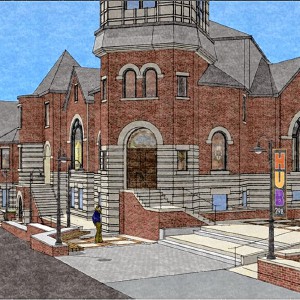 Public gets a look at progress on Northampton Resilience Hub
Public gets a look at progress on Northampton Resilience Hub
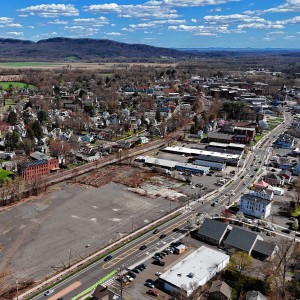 Northampton bans auto dealerships near downtown; zone change won’t affect Volvo operation on King Street
Northampton bans auto dealerships near downtown; zone change won’t affect Volvo operation on King Street
 UMass basketball: Bryant forward Daniel Rivera to be Minutemen’s first transfer of the offseason
UMass basketball: Bryant forward Daniel Rivera to be Minutemen’s first transfer of the offseason
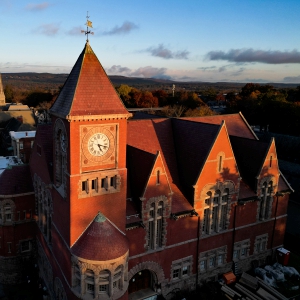 Town manager’s plan shorts Amherst Regional Schools’ budget
Town manager’s plan shorts Amherst Regional Schools’ budget
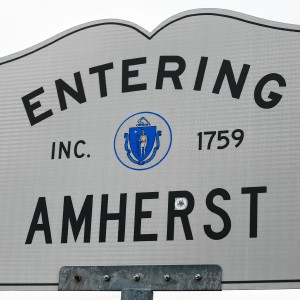 Police respond to alcohol-fueled incidents in Amherst
Police respond to alcohol-fueled incidents in Amherst
The other part will be to analyze the Mill River watershed, almost all of which is within Williamsburg’s town boundaries, and examine ways to help the land retain water during flood events.
“It’s primarily data collection,” Town Administrator Nick Caccamo said, studying existing conditions and producing reports, recommendations and analysis to inform decision making.
The two-year grant is split into payments of approximately $367,000 for FY24 and $315,000 for FY25, Caccamo said.
The town plans to fulfill its match, valued at $90,658, with in-kind services, grant administration and other volunteer efforts to be discussed at the project’s kickoff meeting.
Most of the money will go toward paying contractors for such items as maps and engineering reports, Caccamo said. The town also has hired the Pioneer Valley Planning Commission to help administer the grant.
Immerman said she will serve as liaison between the town and the subcontractors.
“We’re thankful to have a dedicated MVP working group,” Caccamo said.
In Easthampton, the money for Emerald Place will help protect the road, drainage system and nearby properties, all of which sit at the top of a slope above Lower Mill Pond, and where drainage-driven erosion has caused a loss of vegetation and ongoing gullying.
The state grant will cover the costs of design and permitting for bioengineered slope stabilization and green infrastructure to confront the impacts of increasingly heavy rains in an older neighborhood in the city with significant impervious surfaces. The proposed nature-based improvements will provide filtration and infiltration for stormwater, prior to its discharge to the Lower Mill Pond, and will be an important first step in improving overall water quality and building resilient drainage systems for the New City neighborhood.
Along with this work will be associated benefits of upgraded walking and biking infrastructure and safety, with an expanded tree cover and enhanced management of invasives.
Holyoke is receiving two grants. The first is $192,900 for the “Green Infrastructure Design and Land Protection in the Day Brook Watershed.”
Under this project, the aim will be to reduce stormflow volume and improve water quality for the Day Brook. There will also be associated community health and ecological benefits, with activities including an artist residency program with Holyoke youth, development of green infrastructure designs at key watershed locations and acquisition of open space associated with the headwaters of Day Brook — which has sometimes been called “The Secret Stream,” or “La Corriente Secreta.”
The second grant is for $141,680 to publish “Recipes for a Resilient Holyoke: A Community Cookbook.” This cookbook will bring together community recipes, meal plans and inspiring resilience stories, highlighting “the complex intersections of food, climate and resilience.”
In Amherst, $169,250 will be targeted for Fort River watershed improvements by replacing three undersized, damaged culverts for flood resiliency, and rerouting a sewer for water quality resiliency.
In Hadley, $157,641 is going toward flood resilience improvements, including performing flood modeling under existing and potential future conditions, and developing a prioritized action plan to reduce flood risk throughout the watershed through nature-based solutions and stream continuity improvements, such as designing and permitting stream continuity improvements of two undersized culverts.
Deerfield is getting $237,823 for green infrastructure. The three key locations for using this money include the construction of rain gardens, tree box filters and a bio-swale to reduce flooding and stormwater impacts in South Deerfield center; construction of rain gardens, landscape improvements and fencing to reduce flooding and icing hazards at Deerfield Elementary School; and the construction of a tree box filter to reduce flooding impacts to valuable historic properties in Historic Deerfield.

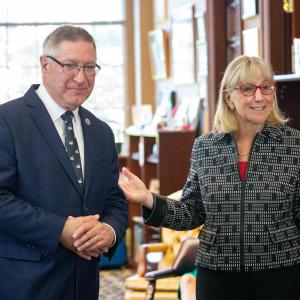 State Senate budget funds free community college for all
State Senate budget funds free community college for all ‘We can just be who we are’: Thousands show support for LGBTQ community at Hampshire Pride
‘We can just be who we are’: Thousands show support for LGBTQ community at Hampshire Pride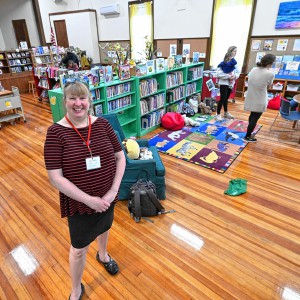 Doors open at Tilton Library’s temporary home at South Deerfield Congregational Church
Doors open at Tilton Library’s temporary home at South Deerfield Congregational Church Area property deed transfers, May 2
Area property deed transfers, May 2
